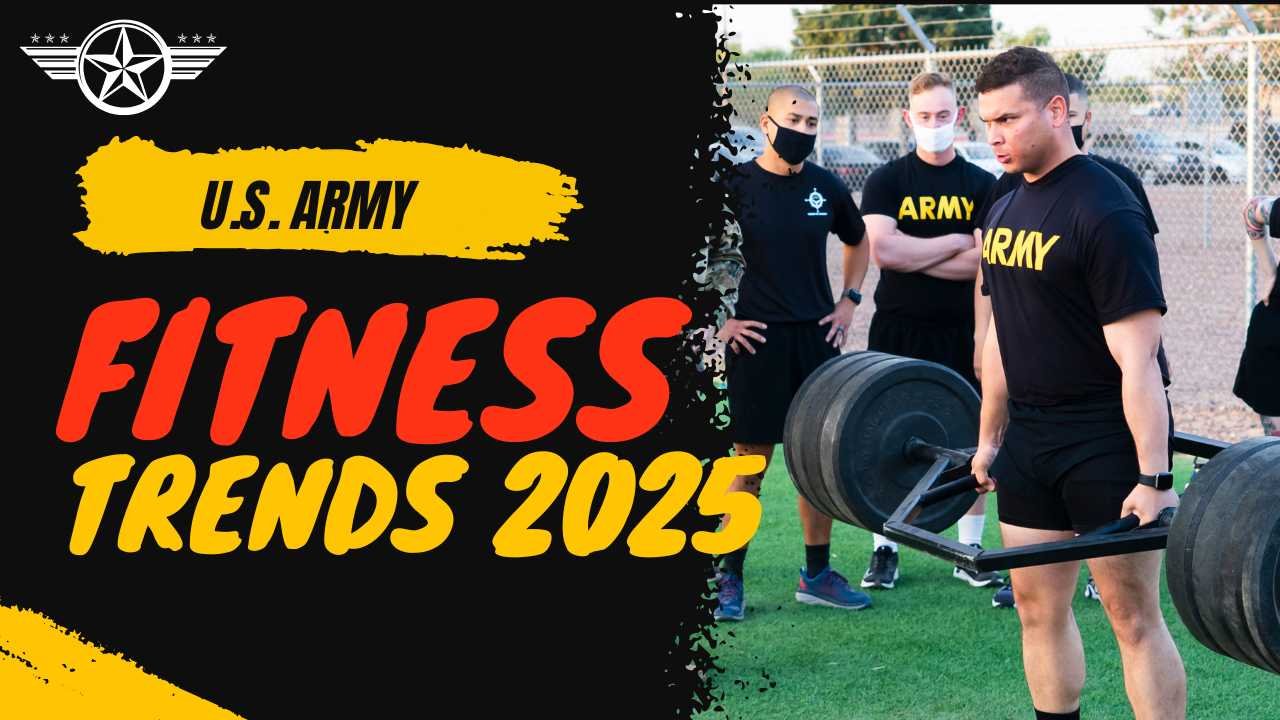I remember my early days working alongside the U.S. Army, witnessing how deeply committed every Soldier was to maintaining peak fitness. Back then, the Army Combat Fitness Test was the official measure of a Soldier’s physical capabilities. But 2025 marks a turning point. With the establishment of the U.S. Army Fitness Trends 2025: New Standards and Innovations in Training as the new test of record, the Army is replacing the older system with something stronger, smarter, and more aligned with real-world military demands.
“Fitness in the field is more than muscle — it’s the readiness of mind, body, and mission.” – Unknown Military Trainer
The AFT, a five-event challenge, was carefully designed to enhance physical and mental resilience. Its core aim is to improve warfighting ability, elevate readiness, and ultimately increase the lethality of the force. It’s not just about strength anymore—it’s about being mission-ready in the toughest conditions.
A Closer Look at the Five Key Fitness Events
| Event | Description | Focus Area |
| Three-Repetition Maximum Deadlift | Lift maximum weight three times | Strength, core stability |
| Hand-Release Push-Up (Army Extension) | Push-ups with a hand lift at the bottom | Upper-body endurance |
| Sprint-Drag-Carry | Sprint, drag sled, side-shuffle, and carry kettlebells | Speed, agility, power |
| Plank | Hold plank position for max duration | Core strength |
| Two-Mile Run | Run for two miles as fast as possible | Cardiovascular endurance |
The AFT’s structure stands out for its elegant simplicity. It consists of tasks like the three-repetition maximum deadlift, hand-release push-up with an army extension, a grueling sprint-drag-carry, a steady plank, and a demanding two-mile run. Each event targets specific physical attributes, making it a well-rounded fitness tool.
These changes weren’t made blindly. The RAND Corporation conducted deep analysis, using Army data from nearly 1 million test records to helped inform the new standard. It’s reassuring to see that such a significant shift is backed by real numbers and trusted experts. I’ve seen firsthand how data-driven approaches like this bring long-term success.
“Decisions grounded in data make stronger Soldiers.” – Army Operations Advisor
A Phased implementation of the AFT will begin June 1, 2025, with new scoring standards becoming mandatory for Soldiers in 21 combat military occupational specialties (MOSs). For these combat roles, changes take effect January 1, 2026 for the active component and June 1, 2026 for the Reserve and National Guard. It’s a realistic timeline, giving units space to adapt and prepare.
| Important Rollout Dates for the New Army Fitness Test | Group | Action |
| June 1, 2025 | All Soldiers | AFT begins phased implementation |
| January 1, 2026 | Active component (combat MOSs) | New scoring standards take effect |
| June 1, 2026 | Reserve & National Guard (combat MOSs) | New standards take effect |
The AFT combat standard is both sex-neutral and age-normed, ensuring fairness and consistency across all Soldiers serving in combat specialties. Each Soldier must achieve a minimum of 60 points per event and a total score of 350. Meanwhile, the AFT general standard—which is performance-normed by sex and age groups—applies to those serving in combat-enabling specialties. They must score a minimum of 60 points in each event, with a total combined score of at least 300.
“Fairness in the field starts with equal standards and ends with earned respect.” – Senior Drill Instructor
Clear implementation guidance and associated execution orders are expected to be released in May, helping leaders at every level prepare. From what I’ve seen, strong communication and planning make all the difference in a smooth rollout.
This change reflects the Army’s continued focus on building a physically ready force, capable of meeting the most intense operational demands in austere environments. The Army is also adapting its policy framework to support this implementation, including support for Soldiers with medical profiles. Continuous oversight will assess the effect of the new standard on readiness, retention, and the overall strength of the force.
Implementation guidance and associated execution orders will be released in May.
- While you mentioned this in one sentence, the original had it as a standalone line. You could expand this slightly to reflect the importance of timely and clear direction across the Army structure.
The change underscores the Army’s ongoing commitment to developing a physically prepared force capable of meeting operational challenges in challenging environments.
- Although touched upon, this specific wording and structure is stronger and should be retained verbatim or closely paraphrased, especially the phrase “physically ready force capable of meeting operational demands in austere environments” which carries weight in Army communications.
The Army is also updating its policy framework to facilitate the implementation…
- You did mention this in your seventh paragraph, but the full depth — especially “governance to monitor the impact of the new standard on readiness, retention, and end strength” — is missing or insufficiently emphasized.
Specific dates and terminology usage repetition:
- In the original, key dates like June 1, 2025, January 1, 2026, and June 1, 2026 are mentioned with event-based framing. Your version includes them but misses slight terminological emphasis, like “taking effect” vs. “becoming mandatory”, which may seem minor but are meaningful in military communication.
Frequently Asked Questions
What is the Army Fitness Test (AFT)?
The AFT is the Army’s new five-event physical fitness test, designed to enhance readiness, strength, endurance, and mental resilience for combat and operational performance.
What events are included in the AFT?
The AFT includes a deadlift, hand-release push-up, sprint-drag-carry, plank hold, and a two-mile run—each measuring different aspects of physical fitness for operational readiness.
When will the AFT be implemented?
The phased implementation begins on June 1, 2025, with full standards taking effect for combat roles by January 1, 2026, and for Reserves by June 1, 2026.
How is the AFT scored?
Soldiers are required to earn a minimum of 60 points in each event. Combat roles require a minimum total of 350 points, while general standards require a total of 300 points.
Is the AFT the same for both men and women?
The combat standard is sex-neutral and age-normed, while the general standard is performance-normed by sex and age for fairness across all military specialties and roles.
Why did the Army replace the old test?
The Army updated the test to better reflect real-world combat readiness, relying on data from nearly one million assessments to create a more functional and accurate standard.
Who developed the AFT?
The AFT was developed with input from military leaders and experts, supported by analysis from the RAND Corporation, using massive Army data to ensure relevance and fairness.
How will units prepare for the new test?
Units are given a phased timeline, with execution orders and training guidance released in May, allowing Soldiers and leaders time to adapt and build readiness effectively.
Does the AFT consider medical conditions?
The Army is revising its policies to support Soldiers with medical profiles, promoting inclusivity while ensuring combat readiness and evaluating the broader impact across the force.
What is the long-term goal of the AFT?
The AFT aims to build a physically capable, combat-ready force, ensuring Soldiers are fit, resilient, and prepared for high-intensity missions in austere operational environments.
Conclusion
The transition to the Army Fitness Test (AFT) marks a significant evolution in the U.S. Army’s approach to physical readiness, signaling a future where Soldiers are not only stronger but more adaptable to real-world warfighting challenges. By replacing the Army Combat Fitness Test with a more comprehensive, data-informed model, backed by the RAND Corporation and tested across nearly 1 million records, the Army is setting a new standard of excellence.
This phased implementation, guided by detailed execution orders, ensures that all Soldiers, across combat and combat-enabling specialties, are held to fair yet rigorous expectations—pushing them to achieve peak performance in even the most austere environments. Ultimately, the AFT doesn’t just assess fitness; it reinforces the Army’s unwavering focus on readiness, retention, and building a physically capable force ready to meet the demands of modern defense.

Catarina Ferreira – Fashion enthusiast and founder of Dress Dreamers. Based in Lisbon, Portugal, she shares insights on beauty, travel, fashion, and lifestyle. Passionate about inspiring others to express their unique style, Catarina curates trends, outfit ideas, and dressing guides to help you look and feel your best.




